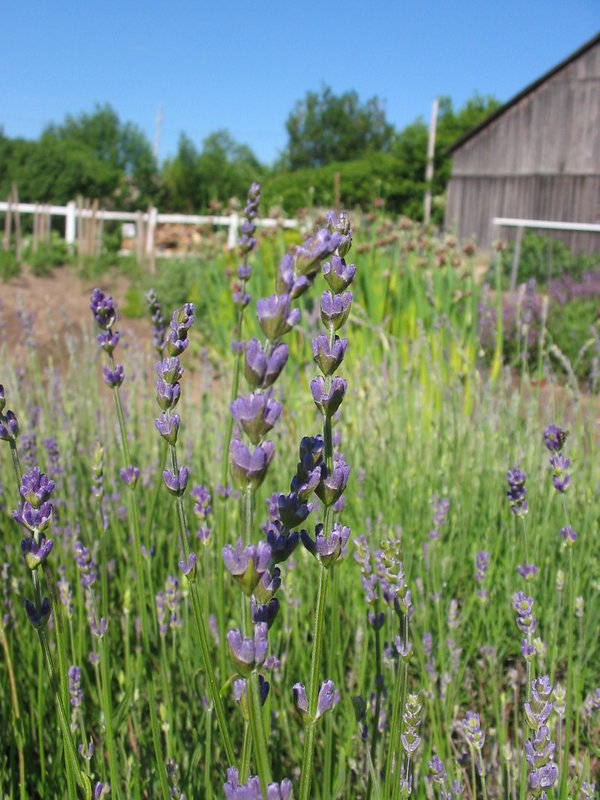How to Save Herb Seeds

Bob Wildfong
Growing herbs from seed can be very rewarding. Most herbs grow reliably for gardeners of every level of experience, and who doesn't love the scent of fresh basil, oregano, or rosemary?
However, it's often difficult to get fresh herb seeds. The packets in your local store probably contain seeds that were grown a long way away, even overseas, and possibly a long time ago. Sometimes, they grow very well, but I've had lots of packets of commercial herb seed that just wouldn't germinate.
At Seeds of Diversity, we like to promote our local seed growers, and we know they care about the quality of their seeds. Buy from a local grower, and you'll have great results - and if not, please let them know so they can still impress you with their excellent service!
What do these herbs have in common?
(Answer below)
Anise Hyssop
Basil
Bergamot
Catnip
Hyssop
Lavender
Lemon Balm
Marjoram
Oregano
Peppermint
Rosemary
Sage
Savory
Shiso (Perilla)
Thyme
Another way to get fresh, high-quality herb seeds is to grow your own! Herbs grow reliably because most of them are not much different from their wild relatives. There are some domesticated cultivars (e.g. Purple Opal basil) that are bred to be different from the original, but for the most part, standard herbs are the same as they were hundreds of years ago. All that time, amateur gardeners kept them alive, so you can too!
Remarkably, most of the common herbs fall into just a few plant families. Probably nine out of ten of the herbs you can name are from either the mint family, or the carrot family, and you can tell easily:
Mint relatives have leaves that are highly scented and flavoured when dried, because the flavour is in the form of oils. The leaves can have a wide range of shapes, but their flowers are always arranged in rings of many small tubular flowers. Examples include bergamot, basil, marjoram, and lavender.
Carrot relatives have leaves that often lose their scent and flavour when dried, because the flavour is in the living leaf tissue. With a few exceptions, they are best used fresh, or for their tasty seeds. The flowers always have the familiar "umbrella" shape of this family. Examples include parsley, dill, fennel, anise, and caraway.
The best time to harvest herb leaves is just before the flowers bloom. Basil, oregano, mint, and sage make their flavour in oils that are produced in the leaves. That's why you can smell them on your fingers after you touch the leaves. Like any oil, it takes a lot of energy for the plants to produce it, and peak production happens just as the flower buds form. After that, when the plants put more energy into flowers and seeds, they put less energy into flavour oil, so the leaves taste bland later in the season.
That's the main reason why herb growers cut the flowers off their herbs, preferably as the buds appear: it preserves the strongest flavour in the leaves, and allows it to increase later in the season. But if you cut off the flowers, you won't get any seeds. Myself, I cut back the flowers on herbs that I want to harvest for the leaves, and allow flowers to grow on the plants that I want to grow seeds. If I were saving basil seeds, I might cut back 3/4 of the flowers, knowing that the tastiest leaves will be on those plants.
Seed saving books usually don't give detailed instructions on herbs. That's because the process is very simple, and very similar for most of them. Like most plants, the seeds are ripe when the flower heads have completely dried brown. If the seed heads are still green at all, it is too early, so leave the seeds on the plants for a few more weeks. Then, cut off the entire seed heads into a paper bag and let them dry completely. Sometimes the seeds will be released easily, and sometimes you have to encourage them.
The first time I tried to extract mint and bergamot seeds from their tubular flowers I spent hours trying to prick them out one by one. What a waste of time. It's much easier to let the flowers dry completely, then rub them between your fingers (wear cotton garden gloves to prevent blisters). The seeds fall out amid the fragments of flowers. Put the seeds and chaff into a shallow soup bowl, blow gently while stirring, and the flowers will blow away leaving the heavier seeds behind.
As essentially wild plants, virtually all herbs are cross-pollinated by insects. However, seed savers should not worry about this unless they are growing particular named varieties. Otherwise, your garden-variety dill is probably the same as your neighbour's.
When your saved seeds are fully dry, keep them that way by storing them where they won't be exposed to humid air. Like all seeds, humidity will shorten their lifespan, and dryness will keep them fresh. In general, seeds of annual herbs such as basil and dill should germinate without any special treatment. Seeds of perennial herbs, such as sage, or lavender, sometimes germinate better after a rest period of at least a few months.
Grown indoors or in the garden, herbs are a delight to every gardener, and your own fresh, home-saved seeds will keep you well stocked with delicious and fragrant plants for years.
**
Bob Wildfong is the Executive Director of Seeds of Diversity. He gives public workshops on Growing and Using Herbs every summer at the Waterloo Region Museum.
Answer:
They're all in the mint family, so they all grow their seeds in rings of tubular flowers
Not yet a member?
An annual membership to Seeds of Diversity gives you access to our seed exchange, seed grow-out programs, and our online news.

We depend on donations to do our work.

Thank you for your support!
